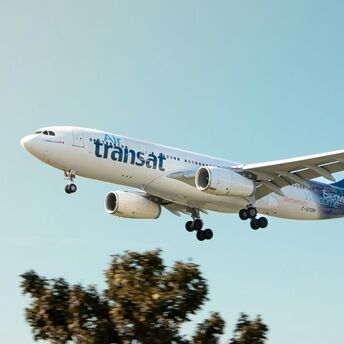Everything You Need to Know About the EU's New Entry/Exit System (EES)

Travelers to Europe will soon experience a significant change in border security with the introduction of the European Union’s new Entry/Exit System (EES). Set to roll out in 2024, this advanced border control system is designed to strengthen security, streamline immigration procedures, and modernize how non-EU travelers enter and exit the Schengen Area. The EES marks a major shift in how the EU manages its external borders and will impact millions of travelers each year. Here’s what you need to know about this new system and how it may affect your next trip to Europe.
What Is the Entry/Exit System (EES)?
The EES is an automated IT system that will replace the current manual passport stamping process for non-EU visitors traveling to and from the Schengen Area. This system will electronically register and track the entry and exit of non-EU nationals, recording biometric data such as fingerprints and facial scans, alongside personal information like name, nationality, and date of birth.
The goal of the EES is twofold: improving border security by preventing visa overstays and ensuring accurate records of travelers entering and leaving the EU. It will apply to all non-EU travelers, including those from visa-exempt countries like the United States, Canada, and Australia, who can currently visit the Schengen Area without a visa for short stays of up to 90 days within a 180-day period.
How Does the EES Work?
Under the new system, upon arrival at a Schengen Area border, non-EU travelers will go through an automated process that includes scanning their travel documents and biometric data. The system will register the individual’s details and create a digital record of their entry. When departing the Schengen Area, the system will again capture biometric and travel information, automatically calculating the length of stay and flagging any potential visa overstays.
The EES will also store data on travelers’ previous entries and exits, making it easier for border authorities to track whether individuals have exceeded the permitted duration of their stay. This data will remain in the system for up to three years and will be accessible to border control officials across the Schengen Area, enhancing their ability to monitor visa compliance.
Who Will Be Affected?
The EES will apply to all non-EU citizens entering the Schengen Area, including both short-term visitors and those traveling for business, tourism, or family reasons. Travelers from visa-exempt countries, such as Americans, Canadians, and Australians, who frequently visit Europe for short stays, will be required to go through the new system. This includes individuals who may have previously been accustomed to more streamlined travel without the need for extensive checks.
Additionally, visitors from countries that require visas to enter the EU will also be processed through the EES, although their visa requirements will remain unchanged. The new system is designed to streamline the entry process for all non-EU travelers, making border crossings more efficient while enhancing security.
Why Is the EES Being Implemented?
The EU has introduced the EES as part of its broader efforts to modernize and strengthen its external borders. One of the key motivations behind the system is the need to improve visa management and prevent the illegal overstaying of visas. By creating an automated system that tracks the exact entry and exit dates of non-EU travelers, the EES will help authorities more accurately monitor who is staying within the Schengen Area and ensure compliance with the rules.
The system is also expected to reduce wait times at border crossings by automating much of the manual process currently in place. With biometric data collected and stored electronically, travelers can expect faster, more efficient border checks, particularly at busy airports and land borders.
Additionally, the EES is part of the EU’s larger strategy to combat irregular migration and enhance security across the Schengen Area. By creating a centralized database of entry and exit records, the EU can better track movements across its borders, reducing the risk of illegal immigration and strengthening internal security.
What’s Next: The ETIAS Travel Authorization
The introduction of the EES is closely linked to the forthcoming European Travel Information and Authorization System (ETIAS), set to launch in 2025. ETIAS will require travelers from visa-exempt countries to apply for authorization before entering the Schengen Area, similar to the U.S. ESTA system. Once implemented, ETIAS will work in conjunction with the EES, further enhancing border security and ensuring that travelers meet the necessary requirements before entering Europe.
The ETIAS application will involve an online process where travelers submit personal information, including passport details and travel plans. The system will then cross-check the data against EU databases to assess whether the traveler poses any security or health risks. Once approved, ETIAS authorization will be valid for multiple entries over a period of three years.
Preparing for the Changes
For travelers planning to visit Europe in the coming years, it’s important to stay informed about the new EES and ETIAS systems. While these changes may add an extra step to the travel process, the EU is aiming to ensure that the systems will be straightforward and user-friendly. Non-EU travelers should expect to provide biometric data upon entry and exit, and for those from visa-exempt countries, the ETIAS requirement will add a layer of pre-screening.
To avoid complications, it’s recommended that travelers check with their airlines or travel agents about the new requirements and plan accordingly. Being aware of these changes well in advance can help ensure a smooth entry into the Schengen Area once the systems are fully operational.



















